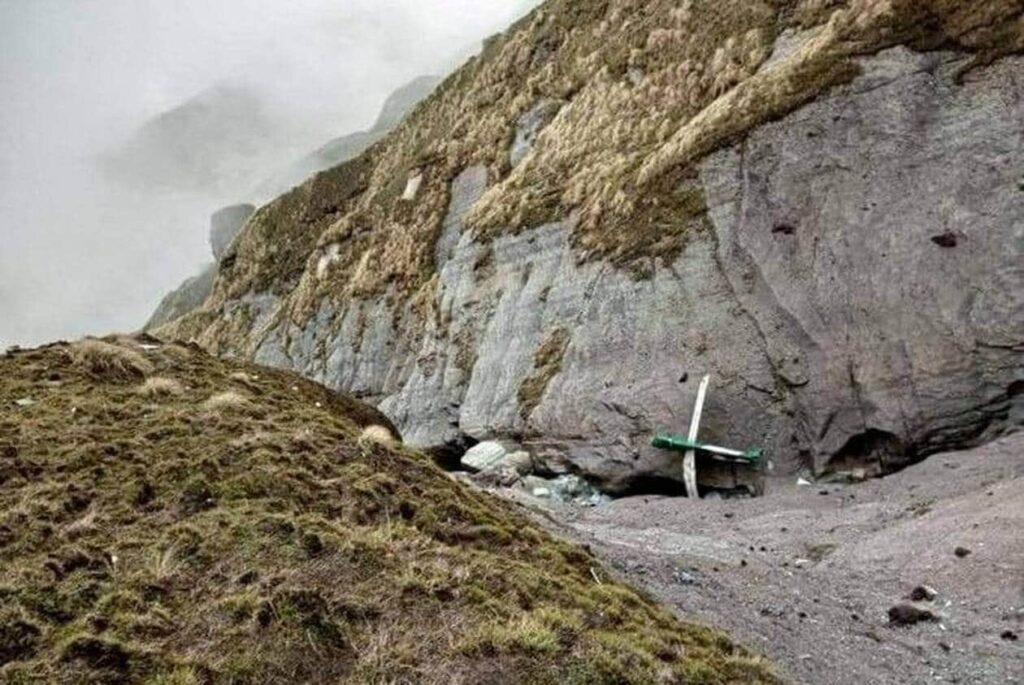Sunday, May 29, 2022, a new plane crash in Nepal killed 22 people. It’s the 19the in ten years, and this is the 10e fatal crash. What is this high frequency of air accidents on Nepalese territory due to? Is flying over this country more dangerous than another? We take stock.
A plane crash killed 22 in Nepal on Sunday May 29, 2022. The aircraft, a twin-engine Twin Otter from the airline Tara Air, took off in the early morning from the city of Pokhara, Nepal’s second largest city, located in 200 kilometers west of the capital Kathmandu. The wreckage of the aircraft was found the next day, on the mountainside, at 4,420 meters above sea level. He was never able to reach his final destination, Jomson, in the Annapurna massif, one of the starting points for treks in the Himalayas, just 70 kilometers and a twenty-minute flight from Pokhara airport.
The flight was of short duration but the accident occurred anyway. And such drama is not unheard of in Nepal. The country has already experienced many other plane crashes: 19 in ten years, including 10 fatal ones, as revealed by Aviation Safety Network, a website that keeps track of air accidents and incidents around the world.
The deadliest accidents in Nepal go back more than ten years, dating back to 1992: 113 people were killed in July of that year on board a plane that crashed near the Kathmandu airport and, a few months later, in the same area, 167 people were killed in another air accident. More recently, in 2018, a similar event claimed 51 lives.
With so many accidents, Nepal is even named as one of the riskiest places in the world to fly, reports the American media CNN . Is there a rational explanation for this situation? Is Nepal more accident-prone than other countries for air transport? We take stock.
Difficult weather conditions
Nepal is subject to difficult weather conditions, because changing and capricious, which regularly alter the visibility for the pilots, explains CNN. Cloudy and stormy weather may have played a role in Sunday’s crash, Binod BK, an official with Nepal’s interior ministry, was quoted as saying by CNN. However, the reasons for the tragedy are not yet known. Investigators are still trying to reconstruct the chain of events.
A hostile topography
In addition to the weather, the topography of the Nepalese territory makes piloting particularly difficult. A 2019 safety report from the Civil Aviation Authority of Nepal, refers to the “hostile topography” of the country, emphasizing that it is part of « huge challenge » faced by pilots.
Eight of the fourteen highest mountains in the world, including Everest, are in fact in Nepal. Moreover, between Pokhara and Jomsom, the pilot of the Twin Otter injured on Sunday passed not far from one of these peaks, Annapurna Dakshin, which rises to 7,219 meters above sea level.
Due to the relief of Nepal and the fact that many air connections serve particularly remote and isolated places, it is mostly small aircraft that are used. And the risk of accident is higher with such small planes, according to the report of the Civil Aviation Authority of Nepal.
Particularly dangerous airstrips
Another reason that contributes to making Nepal one of the riskiest places in the world to fly: the country also has some of the most dangerous airstrips on the planet, located in the middle of high and snowy peaks. It is even for this reason that the airport of the city of Lukla, perched at an altitude of 2,845 meters in the northeast of Nepal, is considered the most dangerous in the world.
Known as the gateway to Everest, the very short airport runway is only 500 meters long and has an incline of 12%, but also laid out on the side of a cliff between the mountains, plunging into a chasm vertiginous drop of 700 meters on one side, with a massive cliff on the other. “There is no possible first attempt. Either the plane lands, or it hits the wall, or it falls off a cliff,” explains journalist Cynthia Drescher in the columns of the American travel magazine Conde Nast Traveler.
Read also: What does the most dangerous airport in the world look like?
Read also: These airports that pilots don’t like
A lack of pilot training and maintenance?
Agence France-Presse offers other explanations for Nepal’s grim air safety record: insufficient pilot training and aircraft maintenance. For these reasons, all Nepalese airlines are on the blacklist of airlines banned from European Union airspace. Not all of the ones on this list meet international safety standards.
Despite everything, thefts are more and more numerous in Nepal. “Nepalese civil aviation has even seen a real boom in recent years, transporting tourists, walkers and mountaineers, as well as goods, to remote places and difficult to reach by road”, adds CNN.



